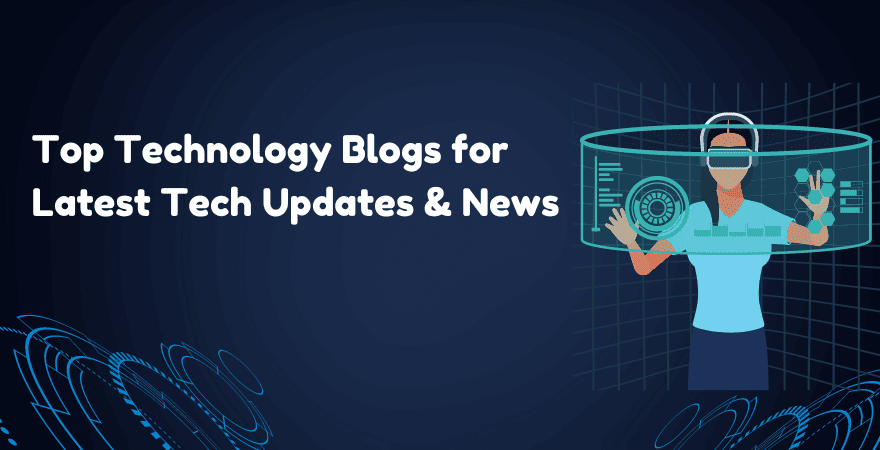Reveal Hidden Treasures in the Industry with the Best tech blog Referrals
Reveal Hidden Treasures in the Industry with the Best tech blog Referrals
Blog Article
Understanding the Surge of Edge Computing in Today's Digital World
In the quickly evolving landscape of innovation, edge computing becomes a pivotal pressure, improving exactly how data is processed and utilized. This paradigm shift is driven by the expansion of IoT gadgets and an escalating need for instantaneous data processing. By transitioning data monitoring closer to the source, edge computing addresses important latency issues while enhancing transmission capacity use and enhancing safety measures. As markets pivot in the direction of smarter, much more efficient systems, understanding the subtleties and effects of this technical improvement becomes necessary. What does this mean for future developments and the digital environment overall?
What Is Side Computer
Edge computing, although a fairly recent development in the world of modern technology, essentially transforms how data is processed and managed by bringing computation and information storage closer to the location where it is needed. Unlike typical cloud computing versions, which commonly rely upon centralized information facilities that can be geographically far-off, side computer decentralizes data handling. This closeness decreases latency, enhances real-time data handling, and improves the total individual experience by making certain faster response times.
At its core, side computing involves a network of localized gadgets and infrastructure, such as portals, routers, and sensing units, with the ability of refining information at or near the resource. This local processing capability is specifically vital for applications requiring instant information evaluation, such as autonomous automobiles, commercial automation, and wise cities. Additionally, by offloading data handling jobs from main servers, edge computing decreases data transfer needs and enhances information privacy and safety, as delicate information can stay on-site rather than traversing considerable networks.

Trick Vehicle Drivers of Adoption
A number of aspects are thrusting the fostering of edge computing in today's digital landscape. Among the primary chauffeurs is the exponential rise in linked tools, usually referred to as the Web of Points (IoT) This rise develops substantial amounts of information that need to be refined promptly and effectively. Edge computing addresses this need by making it possible for information processing closer to the information source, minimizing latency and improving real-time decision-making abilities.
An additional considerable vehicle driver is the need for improved data transfer effectiveness. Centralized cloud systems can come to be overloaded with the sheer volume of information generated by IoT tools, resulting in traffic jams (Best tech blog). By processing data at the edge, organizations can minimize network congestion and improve overall system efficiency
Moreover, protection and personal privacy worries are pressing organizations toward edge computing. By refining delicate information in your area, business can reduce risks connected with information transmission and exposure to potential cyber dangers.
The surge of applications calling for real-time processing, such as independent lorries and enhanced truth, likewise necessitates the rapid reaction times that border computing provides. Collectively, these vehicle drivers are making edge calculating a crucial part of contemporary IT infrastructure, paving the method for its widespread fostering throughout different industries.
Advantages Over Cloud Computer
Just how does basics side computing identify itself from traditional cloud computing? Mainly, side computing brings data handling closer to the resource of information generation, frequently on local tools or close-by web servers, rather than depending on centralized information centers. This closeness significantly minimizes latency, enabling real-time data handling and decision-making. For markets where milliseconds issue, such as self-governing cars or commercial automation, the minimized latency supplied by side computer can be essential.
Moreover, edge computing boosts data transfer effectiveness (Best tech blog). By processing data locally, only the required data is transferred to the cloud for more evaluation or storage, decreasing the quantity of information that passes through the network. This not only reduces network congestion but also reduces data transmission costs
Side computing additionally provides improved data privacy and security. Delicate information can be refined locally without being sent to the cloud, reducing the direct exposure to possible cyber risks. This is specifically advantageous for industries handling secret information, such as health care and economic solutions.
Moreover, side computer makes sure higher durability and reliability. Regional processing permits for proceeded operation even when connection to the cloud is jeopardized, keeping important functions and solutions regardless of prospective network disturbances. These benefits collectively demonstrate side computer's transformative potential in maximizing performance and safety and security in digital ecosystems.
Obstacles and Factors To Consider
While side computing supplies various advantages, it also offers special challenges and considerations that have to be dealt with to totally understand its possibility. Additionally, managing and checking a decentralized network of side tools can be intricate, calling for innovative devices and methods to guarantee smooth operation and maintenance. Best tech blog.
One more consideration is the scalability of side computer options. As the number of connected devices expands, so does the need for processing power at the side, which can result in resource constraints. Organizations must thoroughly intend their facilities to fit this growth without jeopardizing performance or performance.
Interoperability is an additional important factor. With different equipment and software application elements entailed, making sure compatibility and seamless combination can be difficult. Standardization efforts are crucial to facilitate communication in between inconsonant systems.
Future Patterns in Side Computing
Anticipating the future, side computing is positioned to reinvent various markets by enabling much faster information handling and decreasing latency. As the volume of data created by IoT tools remains to grow, edge computer will certainly become significantly essential in handling this increase effectively. One substantial fad is the assimilation of artificial knowledge at the side, permitting real-time analytics and decision-making without relying upon cloud-based resources. This shift is prepared for to improve applications in independent vehicles, smart cities, and medical care, where instant information processing is vital.
An additional arising pattern is the development of edge-native applications designed particularly to leverage the special abilities of side computer. These applications will optimize performance and resource application, resulting in raised performance throughout various fields. Advancements in 5G innovation will certainly further reinforce side computing by offering the necessary infrastructure for high-speed, low-latency interaction between devices and side nodes.
Conclusion
Side computing's increase is driven by the spreading of IoT gadgets and the demand for real-time information processing, which improves efficiency by reducing latency and decentralizing data monitoring. This approach reduces transmission capacity ineffectiveness and protection concerns, facilitating developments in applications like smart cities and visit homepage autonomous cars. Regardless of difficulties such as framework complexity and combination, the future of side computing promises a more responsive digital ecosystem, with continued developments forming its evolution and increasing its applicability across sectors.
Side computing, although a reasonably recent innovation in the world of technology, basically transforms how information is refined and managed by bringing computation and data storage closer to the place where it is needed. Unlike traditional cloud computer designs, which commonly depend on central data centers that can be geographically remote, edge computer decentralizes data handling. Additionally, by offloading information handling tasks from central web servers, side computing decreases bandwidth demands and enhances data personal privacy and safety, as sensitive info can stay on-site instead than passing through comprehensive networks.

Report this page